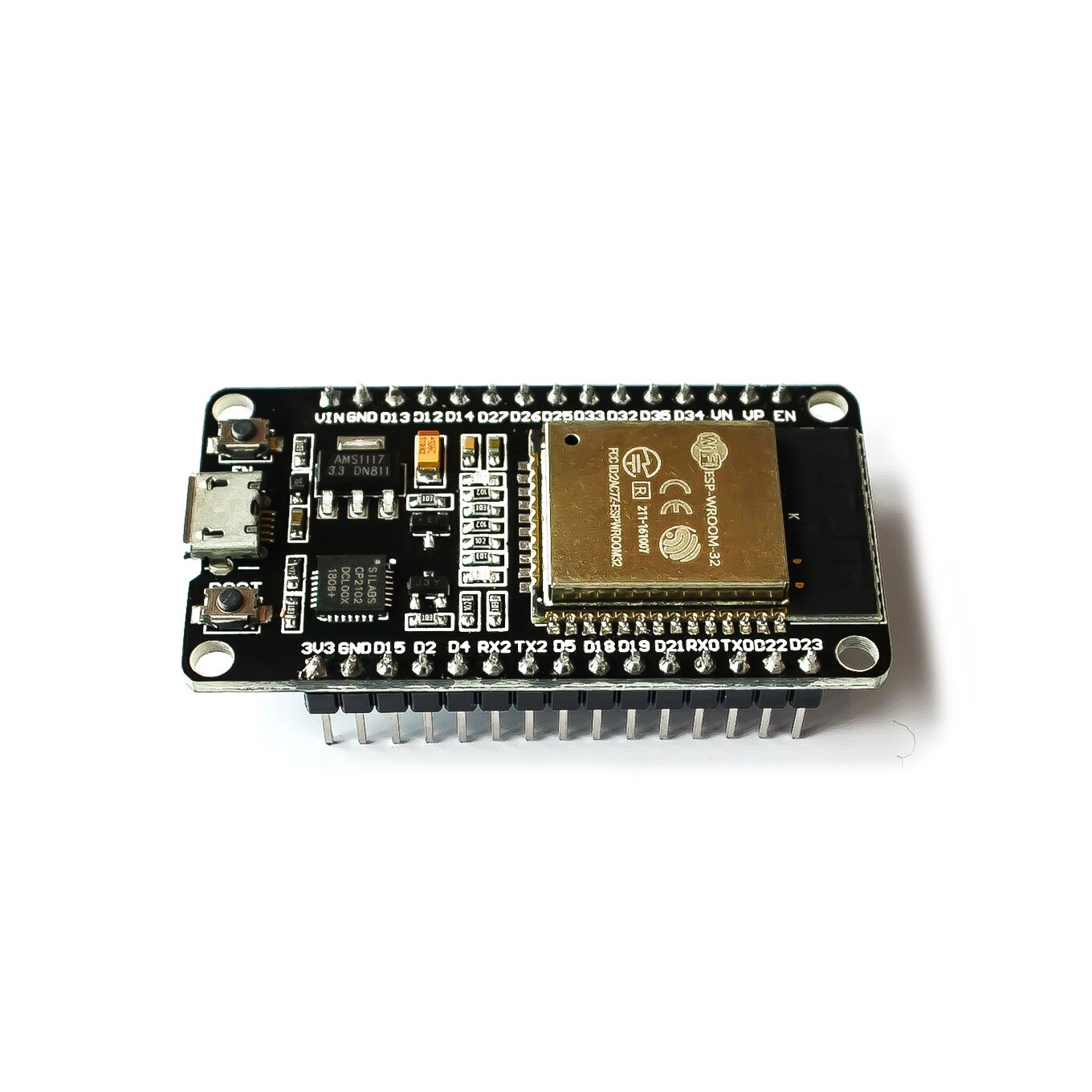ESP32-S Development Board WiFi & Bluetooth - Dual-Core CPU With Low Power Consumption
£5.50
FREE UK Delivery. Receive 50p off on each ESP32 if you buy more than one.
Overview:
✔️ Microcontroller: Xtensa LX6 32-bit
✔️ Clock Speed: 160MHz
✔️ USB Converter: CP2102
✔️ USB Connector: Micro USB
✔️ Flash Memory: 4 MB
✔️ RAM: 512Kb
✔️ Digital I/O: 32 (26 usable)
✔️ PWM: 16 channels
✔️ Analog Outputs: 2 channels, 8-bit
✔️ Analog Inputs: 16 channels, 12-bit
✔️ Communications: 3 Serial, 4 SPI, 2 I2C, CAN bus, I2S Stereo
✔️ Integrated Sensors: IR remote, Hall sensor, temperature sensor, touch sensors, pulse counter
✔️ Bluetooth: 4.2 and BLE (Bluetooth Low Energy)
✔️ WiFi: Built-in 802.11 b/g/n 2.4GHz
✔️ Buttons: EN (Reset) and IO0 (Boot)
✔️ Programming: Compatible with Arduino IDE
✔️ Pin Spacing: 0.1″ centers. Breadboard compatible
✔️ Operating Voltage: 3.3V internal power and I/O. 5V-9V external power with on-board regulator
Description
Additional information
The ESP32-S is a very flexible IOT board that is a significant superset of the popular ESP8266 line. Compared to the ESP8266, it primarily adds significantly more I/O that is very flexible in its functionality as well as Bluetooth. The downside is that being newer, the support is not as extensive as it is for the ESP8266 for some of the unique features such as using the hall effect sensor, IR remote or I2S buses, but items such as CAN bus and capacitive touch are supported in the Arduino IDE.
Besides the IDE, ESP32-S can also be programmed using the Espressif IDF, Microphytoon, LUA and other programming environments.
Compared to the typical AVR processor of the standard Arduino ESP32-S also has a larger 4 MB of Flash memory for program space and runs at clock speeds of 160 MHz and can sometimes optionally be overclocked to 240 MHz and therefore has a very fast processing speed. These can be used as a stand-alone MCU in place of something like an Arduino or it can be used as a peripheral in conjunction with another MCU just to provide WiFi, Bluetooth or other unique capabilities that it has.
The board incorporates 2 push buttons. One is labeled ‘EN‘ which is the Reset button. The other button is labeled ‘IO0‘ which is also called the Boot button. This button is used to download programs to the board.
The ESP32-S chip allows most of the I/O such as the serial ports and I2C to be multiplexed to any of the GPIO pins for flexibility.
Programming the Board
To communicate over USB, the board uses the CP2102 USB to UART bridge chip. If you experience any issues with connecting to the board, you may need to download a driver for this chip.
Drivers can be downloaded at this link: https://www.silabs.com/products/development-tools/software/usb-to-uart-bridge-vcp-drivers
You may also look for:
Package Includes :
- 1 x ESP32-S Development Board

